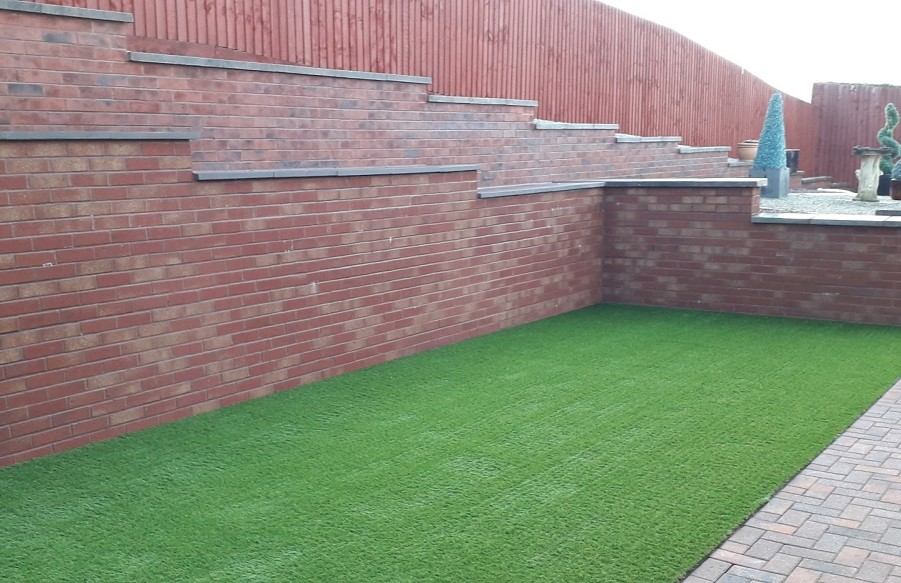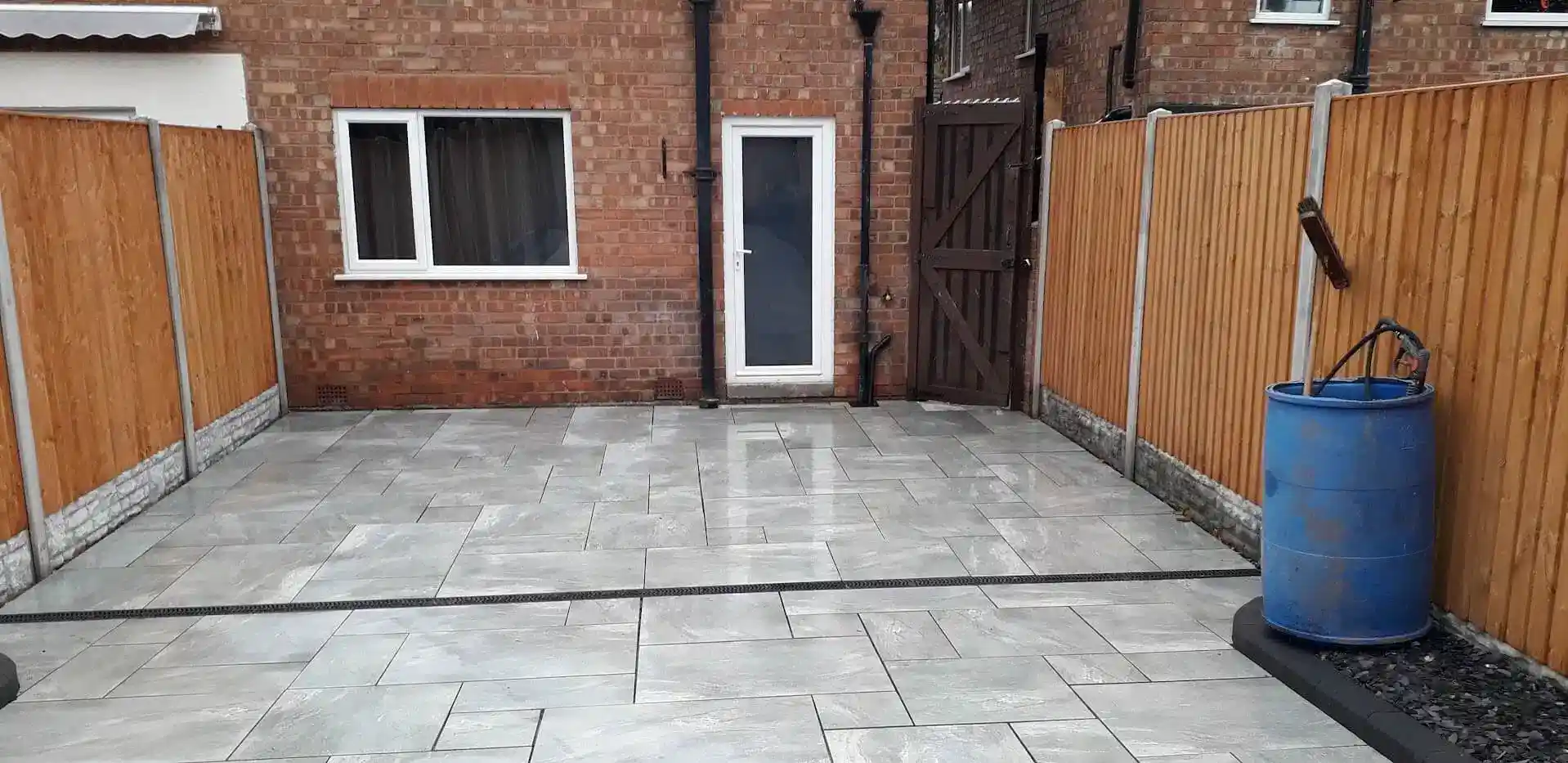What is Hard Landscaping?
Hard landscaping, or hardscaping, refers to the non-plant elements in a landscape design, like pathways, patios, driveways, and other elements made of brick, stone, concrete, or wood. They also include planters, outdoor kitchens, permanent furniture, fountains and gazebos. The term hard landscaping is mainly used by landscape architects and professional garden designers.
Hard landscaping supports plants, trees, and soil, which are referred to as soft landscaping elements.
Elements of Hard Landscaping:
Elements of hard landscaping include patios, pathways, driveways, retaining walls, pergolas, and any outdoor structures made of concrete and brick.
Patio:
A patio is a paved outdoor area adjoining the house. It is the space for sitting outside, usually paved. Patios can be paved with bricks, stone, or concrete slabs with an outdoor floor. This area can also be called a terrace, verandah, or courtyard.
Pathway:
A pathway is a trail or track that serves as a path for walking. Pathways are built with pavers, brick, natural stone, or concrete. These materials provide a stable and aesthetic surface for walking and are durable enough to withstand foot traffic and environmental challenges.
Driveway:
A driveway is a short road or paved area made of asphalt, brick, or concrete leading from a public road to a house or garage.
Retaining Wall:
A retaining wall is designed to hold back soil and prevent erosion. These walls are built with concrete, stone, or timber. The base of the wall is wider than the top, making the structure more stable and able to distribute the load of soil or water.
Pergola:
A pergola is an outdoor structure that consists of vertical posts or columns supporting a roof that is open to the sky. The roof of the pergola consists of a grid of beams or rafters. This structure creates an open-air space for sitting, dining, relaxation, and other outdoor activities.
Materials Used in Hard Landscaping:
Hard landscaping materials are generally man-made materials used to construct patios, pathways, driveways, retaining walls, and other features. Popular materials are concrete, stone, brick, wood, gravel, and metal.
Concrete:
Concrete is one of the most common materials used in hard landscaping. Concrete can be stained, stamped, texturised or even mixed with other materials to give a more beautiful look to your outdoor space. Concrete is used to build elements like planters, basins, steps, edging, patios and walkways, etc.
Flagstone:
Flagstone is another durable material used in hard landscaping. It comes in a variety of shapes, textures and shades to adorn your outdoor area. Flagstone offers a more symmetrical and structured look, especially when integrated into walls or paving with hardscape materials. Also, flagstone is perfect for a rustic modification in its natural state.
Granite:
Granite is a versatile and durable material for hard landscaping projects. Its natural beauty and resistance to environmental elements make it a popular choice for outdoor features like pathways, patios, and retaining walls, etc.
Limestone:
Limestone is a hardscaping material known for its durability, aesthetic appeal and range of applications for hard landscaping projects. It is used to construct driveways, walkways, retaining walls, patios, and decorative elements like ponds and water falls. The porous nature of limestone allows for good drainage. It resists fading, freeze-thaw cycles and wear, making it suitable for various climates.
Wood:
In hard landscaping, many types of wood serve as durable and decorative structures. Wood is used to construct decks, fencing, arbours, pergolas and planters. These elements are usually made from high quality wood such as redwood, oak and cedar.
Steel:
Steel is widely used in hard landscaping due to its durability, versatility and aesthetic appeal. It has high load bearing capacity making it suitable for constructing pergolas, retaining walls, planters, edging, etc. The rust-like patina on steel that develops over time adds unique and organic touch to the outdoor spaces.

What is the Cost of Hard Landscaping?
The hard landscaping cost depends on factors like materials, design complexity, labour, installation, and site conditions. A basic landscaping project like real grass costs between £12 – £30 per metre, flagstone paving can cost £65- £80 per metre, while a complicated project like terracing (10m long, 1m deep) can cost £1,200 – £2,400. By understanding the above factors that affect the total cost, you can effectively plan your hardscaping project within your desired budget.
Advantages of Hard Landscaping:
- Hard landscaping provides a sturdy base to features like statues and pergolas.
- It assists in drainage and water diversion to prevent soil erosion and flooding.
- They are also used to extend functional spaces, providing areas for relaxation and entertainment.
- Hardscaping features like fire pits, outdoor kitchens, and pergolas increase the property’s value by making your house’s outdoor area more liveable.
Disadvantages of hard landscaping:
Despite numerous advantages of hardscaping, they do come with some downsides.
- They have high upfront costs. Projects like patios and driveways demand high material and labour expenses, which makes it challenging for people on a tighter budget to initiate the project.
- Artificial materials like concrete and asphalt can prevent water from infiltrating the ground, creating pools in unwanted areas, and resulting in soil erosion and drainage issues.
- Hard landscaping has a permanent nature. If any alterations are needed, it requires significant cost and effort, complicating future changes.
- Concrete and asphalt absorb and retain significant amounts of solar radiation. It leads to high surface temperatures and creates uncomfortable outdoor spaces. Darker materials absorb more heat than lighter ones, resulting in high heat retention in hot weather.
Conclusion:
Hard landscaping upgrades your outdoor living and increases your home value. The selection between natural and artificial hard landscaping depends on the project’s requirements. The cost of a hard landscaping project depends on the type of landscaping you plan to build, like a pathway, driveway, or retaining wall. The labour expertise can’t be ignored in these projects as any minor faults later can demand vast amounts of time and cost.


